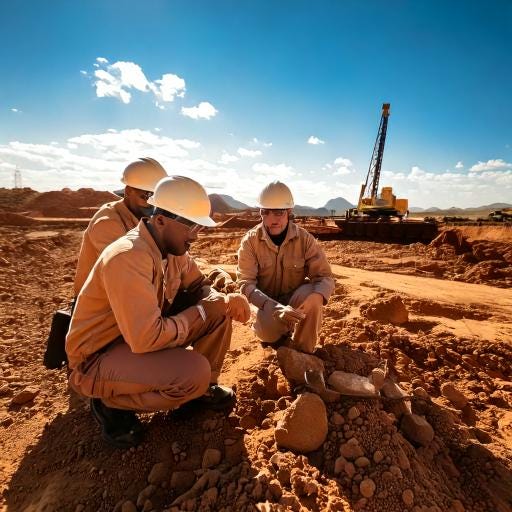Millions of years ago, when oil was swimming and walking around the Bakken in life form, the state was an entirely different place,,according to paleontologist Amanda Cordes Person, Beaver Creek Archaeology. I recently sat down with the paleontologist to get a better understanding of what is below with earth’s surface.
“Archaeologist work with anything cultural, anything having to do with human habitation,” Person said. “Paleontologists deal with everything before humans came on the scene. All life before humans.”
Dinosaurs receive most of the headlines when dealing with historical non-humans, however, according to Person, another prehistoric animal is dominate in the Bakken.
“We have a lot more invertebrates, especially in the Bakken,” Person said. “Like clams and those sort of invertebrates more so, but we do have dinosaurs in North Dakota.”
Long before the glaciers and Lake Agassiz cleansed and carved North Dakota, dinosaurs roamed the planet and the Peace Garden State was covered by a different body of water, according to Person.
“During the Cretaceous time, when dinosaurs were here, North Dakota was covered by an inland sea called the Cretaceous Western Interior Seaway,” Person said. “So we have a lot of fish fossils, a lot of Mosasaurs, which were large marine reptiles.”
Person noted that a common misunderstanding is Mosasaurs are dinosaurs, which they are not, however it lived during the same time period in the planet’s history.
Person continued saying there are many other fossils in the state from invertebrates to sea turtles and most of those aquatic fossils are found in the Eastern part of the state because the west was not covered by the seaway.
“So east and west has a lot of different fossils,” Person said.
One animal that has been able to master the skills of long-term survival are sharks. Sharks have been swimming the Earth’s waters since the Devonians time period, according to Person. The North Dakota Geological Survey claims sharks teeth fossils , sea turtles, clams and other aquatic invertebrates have been found in the Niobrara in the Rendezvous Region, estimated to be 84 million years old.
When asked about the Tyler Formation, Person said she isn’t aware of the latest oil extraction news, but was familiar with the fossil digs in the Black Hills.
“In the Black Hills there is a lot of the Morrison Formation,” Person said. “I’ve worked on several digs in South Dakota where dinosaur bones were found in the Morrison Formation.”
As a paleontologist for Beaver Creek Archaeology, Person works very closely with Native American Tribes, public land management organizations and oil companies during the oil and gas extraction process.
“So essentially when an oil company wants to put in a drill pad or an access road or a flow line we are one of the first people to come in,” Person said. “Archaeologists do cultural resource surveys, where we walk the grounds. Walk across the well pad and look for cultural resources.”
Person said if any are discovered they work with company to move the pad and mitigate a new location. Person continued by noting in NOrth Dakota stone and rock grave sites are common.
“In North Dakota there are a lot of stone features,” Person said. “Stone rings, stone cairns, a lot of them are sacred sites and that’s something we just can’t move. So we will move the pad.”
Person said the oil companies are cooperative and amicable when site relocation occurs for a variety of reasons.
“Usually the site only gets moved a couple hundred feet,” Person said. “They (oil companies) can move the well pad with very little problem because no construction has begun at this time.”
When asked whether she is friend or foe to the oil or construction industry, Person wasn’t sure how she and her colleagues are perceived.
“You know I don’t know,” Person said. “Companies have to jump through a lot of hoops. And as part of the permitting process, the 106 Compliance is what we work on. Which is a Federal Law. And the survey has to be done for culture resources.”
Person transitioned into two key chief concerns of her industry’s role during the oil extraction process.
“We have two main concerns that are equally weighted,” Person said. “One is to work with the oil companies to get them into their project and also to preserve any culture resources. Our motto is ‘where progress meets preservation’.”
Person said the most common findings in the state are stone features of all kinds.
“We have stone rings. They used to be called teepee rings, some are stone circles,” Person said.
Person added they are not completely sure if the stone arrangements are sacred sites or if it was where people used to live, leaving a campsite behind. Other stone features found are stone cairns which could be a grave site or used as a directional tool.
Some of the stone features are difficult to see due to tall prairie grasses and other natural changes time has brought, but others are a little more obvious.
“There are some sites, especially in North Dakota where you can stand on a hilltop and see twenty stone circles,” Person said. “You would know that is not a natural outcrop of rock. If you saw something like that you would know that is something cultural.”
When asked what the most unusual find in her career thus far, Person cited a time when she dug for the North Dakota Geological Society.
“I spent five years working on a dinosaur that has preserved skin, so technically a dinosaur mummy,” Person said. “It was a natural mummy, or coarse, and it was found in Marmarth which is in the Southwestern part of the state.”
Person said a find with preserved skin is very rare and is one of six in the world. One is on display at the American Museum in New York City. The mummified dinosaur is expected to be on display this spring at the new expansion area in the Bismarck Heritage Center.
“It is quite a large fossil, it is several tons so there is much space needed to display it,” Person said.
There are many theories on what preserved the skin on the dinosaur and many people researching the reasons. One theory Person cited is arsenic.
“One of the things I think is interesting is arsenic is a preservative and there is a lot of arsenic in the groundwater near Marmarth,” Person said. “But we don’t know if that was the case when this dinosaur died or not.”
Person said there was no evidence of degradation or rot and most of the rock found around the skin was a small sandstone of the same size. Evidence that the leading theory is a quick event like a flash flood or breaking bend in a river engulfed and covered the dinosaur instantly preserving and protecting from scavengers.
“It’s just perfect skin,” Person said. “It’s since been replaced by minerals so it is now rock.”
CLICK HERE FOR SPECIAL DISCOUNT LINK
New mission. New Lioness. From the executive producer of Yellowstone and the writer of Sicario, the new season of the heart-pounding spy thriller Lioness brings the CIA's fight closer to home.
In order to protect the safety of the country, the team enlists a new Lioness operative to infiltrate a previously unknown threat. While the battle rages on the field, they also confront their personal sacrifices and the impact of their family lives.
Don't miss the critically-acclaimed original series, starring Zoe Saldaña, Nicole Kidman, Morgan Freeman and Michael Kelly. The new season of Lioness is now streaming exclusively on Paramount+. Try it FREE!
CLICK HERE FOR SPECIAL DISCOUNT LINK
Half the price, all the fun. Get 50% OFF any Paramount+ annual plan for a limited time! Take advantage of the fall offer and start streaming...
Take advantage of this limited time offer and stream the NFL on CBS live on Paramount+. Redeem now!
Everyday your story is being told by someone. Who is telling your story? Who are you telling your story to?
Email your sustainable story ideas, professional press releases or petro-powered podcast submissions to thecontentcreationstudios(AT)gmail(DOT)com.
#thecrudelife promotes a culture of inclusion and respect through interviews, content creation, live events and partnerships that educate, enrich, and empower people to create a positive social environment for all, regardless of age, race, religion, sexual orientation, or physical or intellectual ability.
MORE FROM THE CRUDE LIFE
Please click that ♡ button, share, and subscribe.
Please share the links on social media.
Thank you thank you thank you for your engagement and support.
If you have a news tip, press release, guest suggestion or other content concepts, please email thecontentcreationstudios(AT)gmail(DOT)com
This post was brought to you in part by one of The Crude Life’s fantastic sponsors, please consider supporting their services or learning more about their organization by clicking on the banner below.
Blockchain For Energy (B4E)
The Blockchain for Energy (B4E) consortium provides its members with forward thinking learnings and solutions. It collaboratively drives digital transformation by providing members with opportunities to accelerate their digitalization journey.
Through collective synergies, B4E seeks to resolve, reinvent, and transform the industry’s standard ways of working with external parties.
Blockchain for Energy is a safe venue to create transformational change – for the energy industry – by the energy industry. Current B4E members and collaborators include Chesapeake Energy, Chevron, ConocoPhillips, Devon Energy, ExxonMobil, Repsol, Saudi Aramco, Schlumberger, Enovate AI, Emerson ZEDI, Hedera, GBBC/IWA and Tolam Earth.



















Share this post